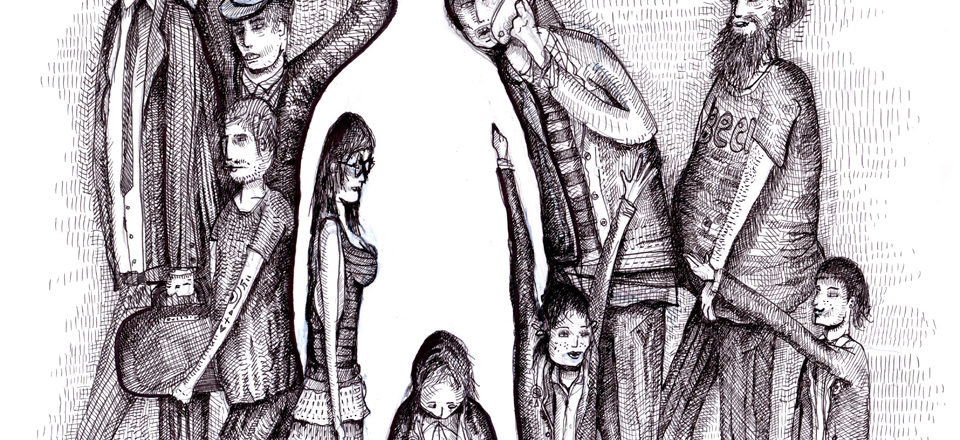
This article is a part of our August focus on Homelessness in Australia – you can access more content from this issue here.
By Stephanie Murphy
In 2008, on-again off-again Prime Minister Kevin Rudd made a bold promise to halve the number of homeless Australians by 2020, and provide supported accommodation to all rough sleepers by the same date.
The policy was enshrined in a White Paper called The Road Home in December 2008 – and while Labor didn’t stick with Mr Rudd, his policy continued more or less intact. Now, a key legislative piece of that policy is before the Senate.
[The Bill] is part of a growing appreciation that the conventional idea of homelessness – a vision of an older man, drug and alcohol dependency, sleeping on the street – is only part of the devastating reality.
The Homelessness Bill 2013 promises to increase “recognition and awareness of people who are homeless or at risk of homelessness”, and it’s likely to become law in the coming weeks. It has been alternately called vital and a mere flight of vanity – so it’s worth looking at what the Bill actually means.
Homelessness in Australia: what’s in a word?
According to the government, the Bill seeks to give a “clear definition” of homelessness. A definition can be a stigma, a powerful and depersonalising label, as Alison Croggon’s captivating recent article shows. But more prosaically, the definition of who and what is “homeless” also determines what kind of support and services people without a fixed address may access.
The Bill’s definition doesn’t only cover those sleeping rough. It recognises that people in temporary or crisis accommodation, boarding houses, or those who shelter with friends or relatives because they have nowhere else to go, are also without a safe and stable home.
It is part of a growing appreciation that the conventional idea of homelessness – a vision of an older man, drug and alcohol dependency, sleeping on the street – is only part of the devastating reality. The face of homelessness in Australia is also a mother with young children, a university student, someone’s grandparent.
What binds these disparate situations together is the lack of control and choice. The Australian Human Rights Commission (AHRC) identifies this powerlessness as the central element of what it means to be homeless: “a lack of control over daily life and an absence of the essential necessities to lead a dignified life”.
The Bill adds to progress already made by Parliament, which recently expanded the definition of homelessness to include people in crisis accommodation, and has also included safety as a requirement of any living situation. Most significantly, this means people who are homeless because their usual address is unsafe – because of domestic violence, for example – may still have access to support services.
Good intentions undermined
The Bill recognises the multifaceted nature of homelessness, its many drivers and the variety of experiences it encompasses. Compared to many European countries, which often fail to recognise homelessness beyond sleeping rough, it is admirably broad in scope.
It contains a recognition that homelessness can be a barrier to rights, the aspiration that all Australians have access to adequate housing, and a “commitment” to continue working with states and territories to reduce homelessness.
But this expansive language is undermined by the second last clause – which specifies, in case there was any doubt, that the Bill does not give rise to any rights or obligations.
[G]iven the string of failed attempts to introduce a Bill of Rights, strong leadership from the Federal government on these issues becomes all the more important.
Part of the reason for this, as the Government itself has noted, is that there is no express Commonwealth power to legislate on homelessness and housing issues, both of which primarily fall to the states and territories. However, the Commonwealth does have the power to give effect to international treaties – and a number of these enshrine a right to adequate housing.
The strongest rights language in the Bill is an “aspiration” to housing for all, which waters down the clear language of the International Covenant on Economic, Social and Cultural Rights (ICESCR), to which Australia has been party for almost 40 years.
The Bill has also come under fire from the Australian Human Rights Commission for failing to adopt a rights-based approach. In its submission to the Commonwealth government, the AHRC argued that without these rights, and the “meaningful and effective” participation of homeless people, the Bill will fall short of the principles of “empowerment, equality, dignity and accountability” required.
An international comparison
The Bill has left many disappointed. But it is not, as one critic alleges, entirely “spineless” and “sanctimonious”. Toby Hall, chief executive of Mission Australia agrees that the Bill isn’t a solution to the problem, but argues it is an important element in a wider suite of policies, including a separate funding Bill being introduced at the same time.
Compared to approaches taken by other countries, the Australian Bill appears in a somewhat better light. Australia is ahead of many European countries in recognising the myriad of situations and living arrangements that may amount to homelessness, and the fact that homelessness extends far beyond simply those sleeping rough.
In contrast, some EU countries are leaning towards defining certain categories of people as homeless by “choice”. This is the case for gypsies in much of Eastern Europe and France, for example, and has definite repercussions in terms of social exclusion and access to services. In countries like the US, anti-panhandling and anti-sleeping laws effectively criminalise homelessness, further increasing the stigma and marginalisation they face.
The UK is the only European country that has legislated responsibilities towards the homeless, and the only country to have set up a taskforce for homelessness. Its two key Acts place specific responsibilities on local authorities, who must rehouse families and other groups who are involuntarily homeless.
The future of homelessness
Despite these relative bright spots, and Kevin Rudd’s grandiose promise, it still seems that little progress has been made. Each night, more than 105,000 Australians are still without a home, virtually no change from the situation in 2006.
Legislating rights protection in Australia is notoriously difficult. Perhaps then it is no surprise that the Bill omits any declarations of entitlement that would be enforceable in court. But given the string of failed attempts to introduce a Bill of Rights, strong leadership from the Federal government on these issues becomes all the more important.
The Homelessness Bill is a step in the right direction, but real change will require much more than good intentions.


